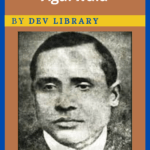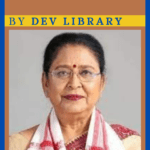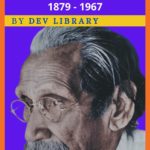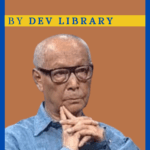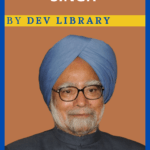Munshi Premchand was an Indian writer who was considered one of the greatest Hindustani writers of the early 20th century. His real name is Dhanpat Rai Srivastava. He was a novelist, short story writer, and playwright who wrote more than a dozen novels, hundreds of short stories, and numerous essays. He translated several literary works from other languages into Hindi. A teacher by profession, he started his literary career as a freelancer in Urdu. He was an independent-minded patriotic soul and his early literary works in Urdu were full of descriptions of the Indian nationalist movement that had been built in different parts of India.
His short stories and novels establish him as a much-loved writer who not only entertains readers but also carries important social messages. He was greatly impressed by the inhuman treatment of Indian women of his time, and often showed pictures of the tragic plight of girls and women in his stories and hoped to create awareness in his readers. A true patriot, he quit his government job as part of the non-cooperation movement called by Mahatma Gandhi. He was finally elected as the first president of the Progressive Writer’s Association of Lucknow. He has been referred to as “Upanyas Samrat” (Emperor Among Novelists) by writers.

Biography of Munshi Premchand
| Name | Dhanpat Rai Srivastava[1] |
| Famous Name | Munshi Premchand |
| Date of Birth | 31 July 1880 |
| Place of Birth | Varanasi |
| Occupation | Novelist, storyteller, journalist |
| Father’s Name | Ajaib Lal Srivastava |
| Mother’s Name | Anandi Devi |
| Spouse | Shivarani Devi |
| Language | Hindi and Urdu |
| Nationality | Indian |
| Death | October 8, 1936 |
Early Life and education of Munshi Premchand
Premchand was born on July 31, 1880, in Lamhi village near Varanasi. His mother’s name was Anandi Devi and his father’s name was Munshi Ajaib Lal Srivastava. His father was a post office clerk. Dhanpat Rai was the fourth child of Anandi Devi and Munshi Ajaib Lal Srivastava. His uncle, Mahabir, a rich landowner, nicknames him “Nawab”, meaning Baron. “Nawab Rai was the first pen name chosen by Dhanpat Rai. When he was seven years old, Rai began his education at Madrasa in Lalpur, Varanasi, located near Lamhi. His education began in Urdu and Persian from maulvi in the madrasa, and he loved learning and reading since his childhood. When he was eight his mother died after a long illness. His grandmother, who took the responsibility of raising him, died soon after. Premchand felt isolated, as his elder sister Suggi had already been married, and his father was always busy with his work. His father, who was now posted at Gorakhpur, remained but Premchand received little affection from his stepmother. The stepmother later became a recurring theme in Premchand’s works. His father died in 1897 after a long illness. He managed to pass the matriculation examination with the second division. He became a teacher in a local school after passing the matriculation examination in 1898. He continued to study along with the job. After passing out, he was appointed as inspector of the education department.
Also Read: Biography of Mohan Rakesh
Marriage Life of Premchand
Premchandji had been fighting fate since childhood. The love and happiness of the family was never properly achieved. Because of old customs, under pressure from his father, he got married at the very young age of fifteen. Premchandji, without his consent, without asking him, was married to a girl who was very quarrelsome and ugly in nature. Father married, only seeing a girl from a rich family.
Father also died after suffering from illness and the whole burden fell on Premchandji. There came a time when even after his job he had to sell his valuable architecture and run the house when needed. At a very young age, the whole burden fell on him. For him, Premchand’s first wife did not meet up with his match, and because of this, he divorced her. After some time, he married a woman of his choice to a widow at the age of about twenty-five.
Literary Life of Munshi Premchand
Dhanpat Rai first wrote under the pseudonym “Nawab Rai”. His first short novel was Asrar-e-Ma’abid (“Secrets of God’s abode”, Devasthan Rahasya in Hindi), which explores corruption among the temple priests and their sexual exploitation of poor women. The novel was published in a series in the Benares-based Urdu weekly Awaz-e-Khalk from 8 October 1903 to February 1905. Premchand is considered to be the father of modern Hindi stories and the “Upanyas Samrat” (Novel Emperor). Although his literary career began in 1901, his first Hindi story was produced in 1915 in the December issue of Saraswati magazine as “Saut” and his first short story collection Sapta Saroj was published in June 1917, and the last story was in 1936 under the name “Soufan”. During this period of twenty years, many colors of his story are seen. Before him, only imaginary and mythological religious works were written in Hindi. Premchand introduced realism in Hindi. Most of the discussion of Indian literature that later figured prominently, whether it was Dalit literature or women’s literature, has its roots deep in Premchand’s literature. However, Munshi Premchand was very fond of books from an early age, so he wrote many stories. He considered Hindi as the best language because he believed that Hindi language has an identity every day.
Munshi Premchand’s compositions
Novels
‘Devasthan Rahasya’, ‘Prema’, ‘Kishna’, ‘Roothi Rani’, ‘Vardaan,Seva Sadan’, ‘Premashram’, ‘Rangbhoomi’, ‘Nirmala’, ‘Pratigya’, ‘Gaban’, ‘Godaan’ etc.
Short stories
‘Jihad’, ‘Lekhak’, ‘Duniya Ka Sabse Anmol Ratan’, ‘Bade Bhai Sahab’, ‘Beti ka Dhan’, ‘Saut’, ‘Panch Parameshwar’, ‘Maa’, ‘Ghar Jamai’, ‘Dil ki Rani’, etc.
Drama
‘Sangram’, ‘Karbla’, ‘Prem ki Vedi’, ‘Tajurba, ‘Roohani Shadi’.
Essays
‘Kuchh Vichar (two parts)’, ‘Qalam Tyag aur Talwar’.
Children’s books
‘Bal Kahaniyan Sumpurn’, ‘Manmodak’, ‘Ram Charcha’.
Translations
Premchand translated several non-Hindi works into Hindi. These included the writings of Ratan Nath Dhar Sarshar, Leo Tolstoy (The Story of Richard Doubledick), Oscar Wilde (Canterville), John Galsworthy (Strife), Saadi Shirazi, Guy de Maupassant, Maurice Maeterlinck (The Sightless) and Hendrik Willem van Loon (The Story of Mankind).
Adaptation of the name Premchand
In 1909, Premchand was transferred to Mahoba and later posted to Hamirpur as the sub-deputy Inspector of Schools. Around this time, Soz-e-Watan was noticed by the British Government officials, who banned it as a seditious work. James Samuel Stevenson, the British collector of Hamirpur district ordered a raid on Premchand’s house, where around five hundred copies of Soz-e-Watan were burnt, After this, Munshi Daya Narain Nigam, the editor of the Urdu magazine Zamana, who had published Dhanpat Rai’s first story “Duniya ka Sabse Anmol Ratan” advised the pseudonym “Premchand”. Dhanpat Rai stopped using the name “Nawab Rai” and became “Premchand”.
Death
Great writer Munshi Premchand died on October 8, 1936.
FAQ
1. When and where was Munshi Premchand born?
Ans: Munshi Premchand was born on 31 July 1880 in Varanasi.
2. Who is Munshi Premchand?
Ans: Munshi Premchand is one of the most popular novelists storytellers and thinkers in Hindi and Urdu.
3. What is the real name of Munshi Premchand?
Ans: Dhanpat Rai Srivastava.
4. What is Munshi Premchand’s place in literature?
Ans: Premchand developed a tradition of Hindi stories and novels that guided the literature of the entire century. His writing sits as a legacy of Hindi literature without which the study of the development of Hindi would be incomplete. He was a sensitive writer, a conscious citizen, an accomplished speaker, and a fine editor.
5. What is Premchand’s most famous novel?
Ans: Godan.
6. Name some of the notable works of Premchand.
Ans: Some of his notable works are – Godaan, Bazaar-e-Husn, Karmabhoomi, Shatranj ke Khiladi, Gaban etc.
7. When did Munshi Premchand die?
Ans: He died on October 8, 1936, at the age of 56.

Hi, I’m Dev Kirtonia, Founder & CEO of Dev Library. A website that provides all SCERT, NCERT 3 to 12, and BA, B.com, B.Sc, and Computer Science with Post Graduate Notes & Suggestions, Novel, eBooks, Biography, Quotes, Study Materials, and more.


